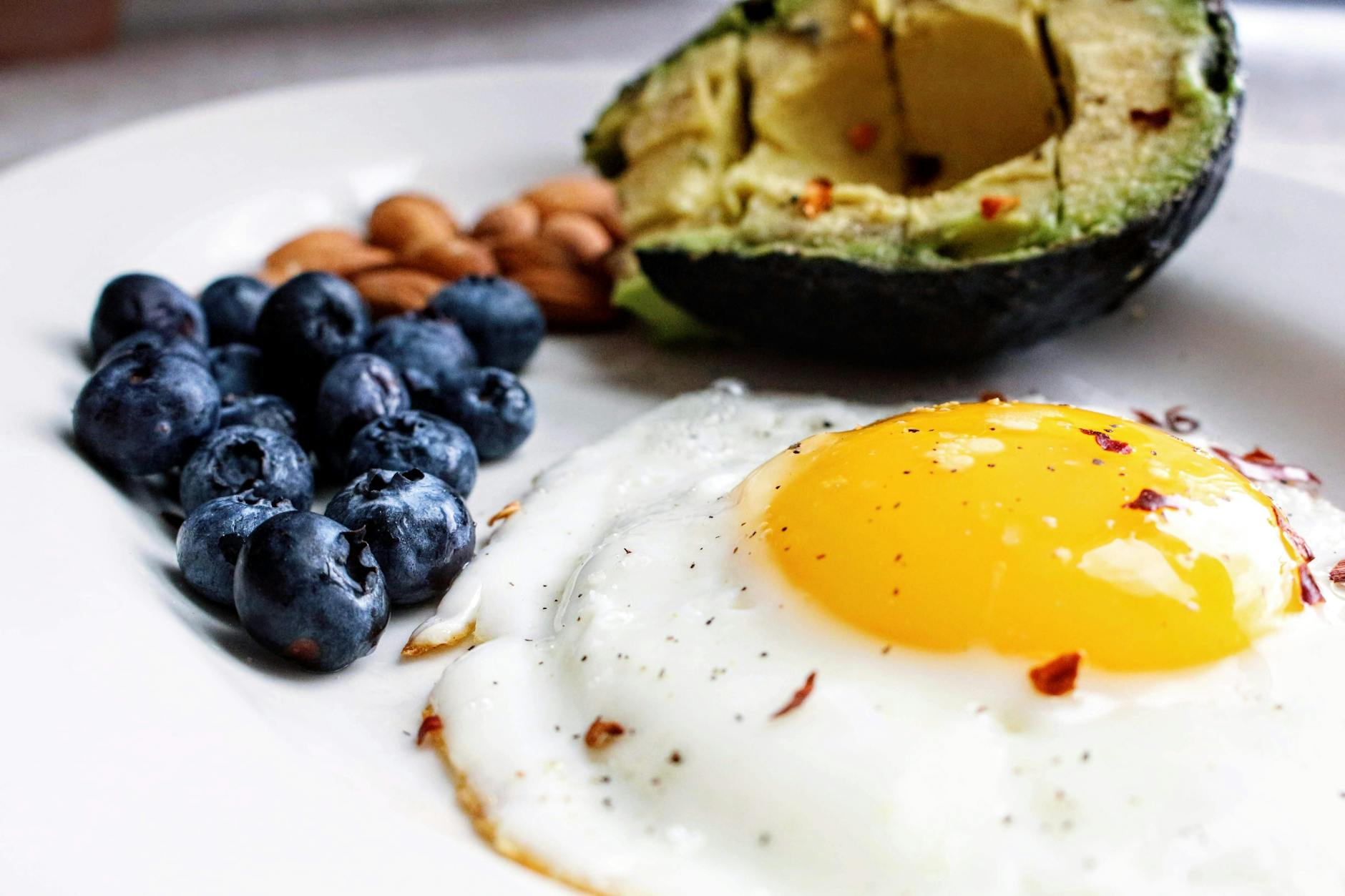
Are you tired of fad diets that promise the world but leave you feeling hungry and unsatisfied? 🍽️ Enter the keto diet - a revolutionary approach to nutrition that's taking the health and wellness world by storm. This low-carb, high-fat eating plan has helped countless individuals shed unwanted pounds, boost energy levels, and improve overall health.
But here's the catch: navigating the world of keto can be overwhelming. With conflicting information and complex terminology, it's easy to feel lost before you even begin. That's where we come in! In this comprehensive guide, we'll break down everything you need to know about the keto diet, from its fundamental principles to advanced strategies for success. Whether you're a curious beginner or a seasoned keto enthusiast looking to level up, we've got you covered.
Get ready to embark on a transformative journey as we explore the ins and outs of keto living. We'll dive into understanding the diet's basics, guide you through getting started, reveal secrets for maximizing weight loss, address common challenges, and even unveil advanced techniques for those ready to take their keto game to the next level. 💪 Let's unlock the power of ketosis together!

Understanding the Keto Diet
To embark on your ketogenic journey, it's crucial to grasp the fundamental concepts that make this diet unique and effective. Let's delve into the core principles of the keto diet, explore the fascinating process of ketosis, and uncover the potential health benefits that have made this dietary approach so popular.
A. What is ketosis?
Ketosis is a metabolic state in which your body shifts from using glucose as its primary fuel source to burning fat for energy. This occurs when you significantly reduce your carbohydrate intake, typically to less than 50 grams per day. As a result, your liver begins to convert fatty acids into ketone bodies, which serve as an alternative energy source for your brain and body.
Key points about ketosis:
-
It usually takes 2-4 days of very low-carb intake to enter ketosis
-
You can measure ketone levels in blood, urine, or breath
-
Ketosis is different from ketoacidosis, which is a dangerous condition
B. Key principles of the keto diet
The ketogenic diet is built on specific principles that set it apart from other dietary approaches. Understanding these principles is essential for successful implementation:
-
Low carbohydrate intake
-
High fat consumption
-
Moderate protein intake
-
Focus on whole, unprocessed foods
Here's a breakdown of the typical macronutrient ratios in a keto diet:
| Macronutrient | Percentage of daily calories |
|---|---|
| Fat | 70-75% |
| Protein | 20-25% |
| Carbohydrates | 5-10% |
C. Health benefits of going keto
The keto diet has gained popularity not only for its weight loss potential but also for its various health benefits. Some of the potential advantages include:
-
Improved insulin sensitivity
-
Reduced inflammation
-
Enhanced mental clarity and focus
-
Increased energy levels
-
Better blood sugar control
-
Potential neuroprotective effects
It's important to note that while many people experience these benefits, individual results may vary. Some individuals may also experience initial side effects, known as the "keto flu," as their body adapts to the new way of eating.
As we explore the keto diet further, it's essential to understand how to properly implement this dietary approach. In the next section, we'll dive into the practical aspects of getting started with keto, including meal planning and essential foods to include in your diet.

Getting Started with Keto
Now that we understand the basics of the keto diet, let's dive into how to get started. This section will guide you through the essential steps to begin your keto journey, ensuring you have the knowledge and tools to succeed.
Calculating Your Macros
The foundation of a successful keto diet lies in understanding and calculating your macronutrient ratios. On a standard keto diet, your daily intake should typically consist of:
-
70-75% fat
-
20-25% protein
-
5-10% carbohydrates
To calculate your specific macros, consider factors such as your age, gender, height, weight, and activity level. Several online keto calculators can help you determine your personalized macronutrient goals.
| Macronutrient | Percentage | Example (based on 2000 kcal/day) |
|---|---|---|
| Fat | 70-75% | 155-167g |
| Protein | 20-25% | 100-125g |
| Carbohydrates | 5-10% | 25-50g |
Essential Foods for a Keto Diet
Stocking your kitchen with keto-friendly foods is crucial for success. Here's a list of essential items to include in your keto diet:
-
Healthy fats: Avocados, olive oil, coconut oil, butter, ghee
-
Protein sources: Eggs, fatty fish, chicken, beef, pork
-
Low-carb vegetables: Spinach, kale, broccoli, cauliflower, zucchini
-
Nuts and seeds: Almonds, walnuts, chia seeds, flaxseeds
-
Dairy: Full-fat cheese, heavy cream, Greek yoghurt (in moderation)
-
Berries: Strawberries, raspberries, blackberries (in small amounts)
Foods to Avoid
To maintain ketosis, it's essential to know which foods to eliminate from your diet. Here are some items to avoid:
-
Grains and starches (bread, pasta, rice)
-
Sugar and sugary foods
-
Most fruits (except small portions of berries)
-
Starchy vegetables (potatoes, corn, peas)
-
Legumes (beans, lentils)
-
High-carb processed foods
-
Sweetened beverages
Meal Planning Tips
Effective meal planning is key to staying on track with your keto diet. Consider these tips:
-
Prep meals in advance: Cook large batches of keto-friendly meals and store them for the week.
-
Keep it simple: Start with easy recipes and gradually expand your keto cooking skills.
-
Use a food tracking app: Monitor your macros to ensure you're staying within your goals.
-
Plan for snacks: Keep keto-friendly snacks on hand for when hunger strikes.
-
Stay hydrated: Drink plenty of water and electrolyte-rich beverages to avoid the "keto flu."
By following these guidelines and tips, you'll be well-equipped to start your keto journey. Remember, consistency is key, and it may take some time for your body to adjust to this new way of eating. Next, we'll explore how to maximize weight loss on the keto diet and overcome common challenges.

Maximizing Weight Loss on Keto
Now that you've started your keto journey, it's time to focus on maximizing your weight loss results. By implementing the following strategies, you can optimize your keto diet for even greater success.
A. Tracking your progress
Keeping a close eye on your progress is crucial for staying motivated and making necessary adjustments to your keto diet plan. Here are some effective ways to track your weight loss journey:
-
Body measurements
-
Progress photos
-
Body fat percentage
-
Ketone levels
-
Energy levels and mood
| Tracking Method | Frequency | Benefits |
|---|---|---|
| Weight | Weekly | Easy to measure, provides quick feedback |
| Body measurements | Bi-weekly | Shows changes in body composition |
| Progress photos | Monthly | Visual representation of progress |
| Body fat percentage | Monthly | Indicates fat loss vs. muscle loss |
| Ketone levels | Daily/Weekly | Ensures you're in ketosis |
B. Intermittent fasting and keto
Combining intermittent fasting with your keto diet can accelerate weight loss and provide additional health benefits. Here's how to incorporate intermittent fasting into your keto lifestyle:
-
Start with a 16:8 fasting schedule (16 hours fasting, 8 hours eating window)
-
Gradually increase fasting periods as your body adapts
-
Stay hydrated during fasting periods
-
Break your fast with nutrient-dense, keto-friendly foods
Intermittent fasting can enhance ketosis, improve insulin sensitivity, and boost fat burning. However, it's essential to listen to your body and adjust your fasting schedule as needed.
C. Exercise strategies for keto dieters
While diet plays the most significant role in weight loss, incorporating exercise can help you reach your goals faster and improve overall health. Consider these exercise strategies for keto dieters:
-
Low-intensity steady-state cardio (LISS)
-
High-intensity interval training (HIIT)
-
Strength training
-
Yoga or Pilates for flexibility and stress reduction
When starting an exercise routine on keto, it's important to:
-
Start slowly and gradually increase the intensity
-
Stay hydrated and replenish electrolytes
-
Listen to your body and adjust workouts as needed
-
Fuel your body with appropriate pre-and post-workout nutrition
By combining these strategies – tracking your progress, incorporating intermittent fasting, and implementing an exercise routine – you'll be well-equipped to maximize your weight loss on the keto diet. Remember that everyone's journey is unique, so be patient and consistent in your efforts. Next, we'll explore how to overcome common challenges that keto dieters face, ensuring long-term success on your weight loss journey.

Overcoming Keto Challenges
As you progress on your keto journey, you may encounter several obstacles. Let's explore some common challenges and effective strategies to overcome them, ensuring your success on the keto diet.
A. Dealing with keto flu
The keto flu is a common side effect experienced by many when transitioning to a ketogenic diet. Symptoms may include fatigue, headaches, and irritability. Here are some tips to alleviate these symptoms:
-
Stay hydrated: Drink plenty of water and electrolyte-rich beverages
-
Increase salt intake: Add more salt to your meals or consume bone broth
-
Get adequate rest: Prioritize sleep and relaxation during the transition
-
Gradually reduce carbs: Consider a slower transition to ease your body into ketosis
B. Maintaining social life while on keto
Navigating social situations can be challenging when following a keto diet. Here are some strategies to help you stay on track:
-
Plan ahead: Research restaurant menus before dining out
-
Communicate your dietary needs: Inform hosts or friends about your diet
-
Bring keto-friendly dishes to gatherings
-
Focus on socializing rather than food
C. Addressing nutrient deficiencies
While the keto diet can be nutritious, it's essential to ensure you're getting all the necessary nutrients. Here's a table of potential deficiencies and how to address them:
| Nutrient | Food Sources | Supplement Options |
|---|---|---|
| Magnesium | Spinach, avocado, nuts | Magnesium citrate or glycinate |
| Potassium | Avocado, spinach, salmon | Low-sodium salt substitutes |
| Fiber | Chia seeds, flaxseeds, leafy greens | Psyllium husk powder |
| Omega-3s | Fatty fish, chia seeds, flaxseeds | Fish oil or algae-based supplements |
D. Staying motivated long-term
Maintaining motivation is crucial for long-term success on the keto diet. Consider these strategies:
-
Set realistic goals and track your progress
-
Join a keto community for support and inspiration
-
Experiment with new keto-friendly recipes to keep meals exciting
-
Celebrate non-scale victories, such as improved energy or better sleep
-
Regularly remind yourself of the health benefits of the keto diet
Remember, overcoming these challenges is part of your keto journey. By addressing these common issues, you'll be better equipped to stick to your keto diet plan and reap its many benefits. In the next section, we'll explore some advanced keto strategies to take your results to the next level.

Advanced Keto Strategies
As you become more comfortable with the standard ketogenic diet, you may want to explore advanced strategies to further optimize your results. Let's dive into some sophisticated approaches that can take your keto journey to the next level.
A. Cyclical Keto Diet
The cyclical keto diet (CKD) is a variation that involves alternating periods of standard keto eating with brief "carb-loading" phases. This strategy is particularly popular among athletes and bodybuilders.
-
Structure: Typically 5-6 days of strict keto followed by 1-2 days of higher carb intake
-
Benefits:
-
Replenishes glycogen stores
-
May improve athletic performance
-
Can help break through weight loss plateaus
-
| Day | Diet Type | Macronutrient Focus |
|---|---|---|
| 1-5 | Standard Keto | High-fat, low-carb |
| 6-7 | Carb Loading | Higher carb, moderate protein |
B. Targeted Keto Diet
The targeted keto diet (TKD) allows for strategic carb intake around workout times, making it an excellent option for active individuals.
-
Timing: Consume 15-50g of easily digestible carbs 30 minutes before or after exercise
-
Advantages:
-
Provides quick energy for high-intensity workouts
-
Maintains overall ketosis
-
Supports muscle recovery
-
C. Exogenous Ketones: Pros and Cons
Exogenous ketones are supplements designed to boost blood ketone levels quickly. While they can be beneficial, it's essential to understand their advantages and potential drawbacks.
Pros:
-
The rapid increase in ketone levels
-
May enhance mental clarity and focus
-
Potential to reduce keto flu symptoms
Cons:
-
Can be expensive
-
May cause digestive discomfort in some individuals
-
Not a substitute for proper keto dieting
| Aspect | Exogenous Ketones | Natural Ketosis |
|---|---|---|
| Speed | Rapid | Gradual |
| Sustainability | Short-term | Long-term |
| Cost | Higher | Lower |
| Health Benefits | Limited | Comprehensive |
These advanced strategies can help you fine-tune your keto approach, potentially leading to improved results and a more flexible lifestyle. However, it's crucial to remember that the foundation of any successful keto journey is a well-formulated, whole-food-based ketogenic diet. These advanced techniques should be viewed as enhancements rather than replacements for the core principles of keto eating.
Next, we'll explore how to maintain long-term success on the ketogenic diet, ensuring that your newfound health and lifestyle changes become a sustainable part of your future.

The keto diet offers a powerful approach to weight loss and overall health improvement. By understanding the principles of ketosis, preparing adequately, and implementing effective strategies, you can maximize your results on this low-carb, high-fat eating plan. Remember to stay committed, overcome challenges like the keto flu, and explore advanced techniques to keep your journey exciting and effective.
As you embark on your keto journey, always prioritize your health and listen to your body. Consult with a healthcare professional before making significant dietary changes, and don't hesitate to adjust your approach as needed. With patience, persistence, and the right mindset, the keto diet can be a transformative tool in achieving your wellness goals.
